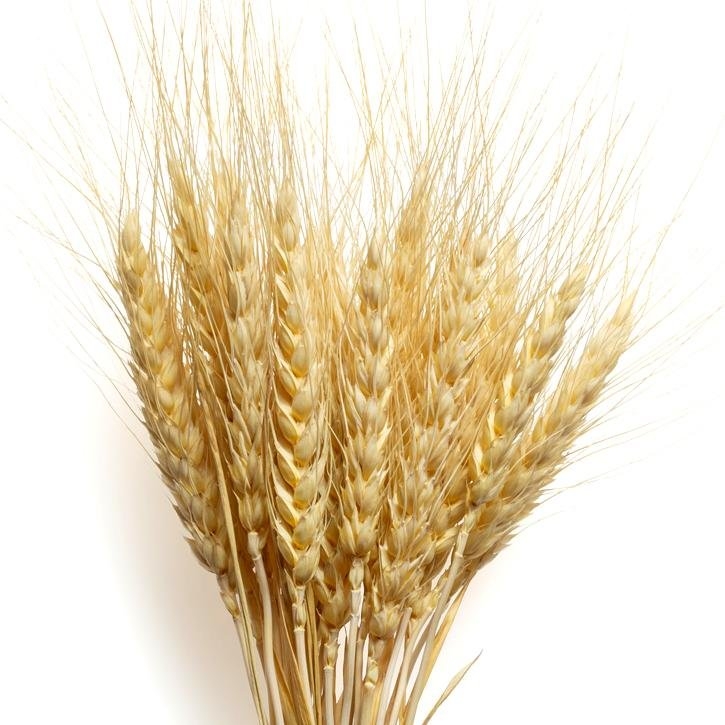Wheat (yellow in color) is one of the three most widely produced grains globally, along with corn and rice, and the most widely consumed by man in Western civilization since ancient times.
The grains are oval-shaped caryopsis with rounded ends. The germ protrudes in one of them and in the other there is a tuft of fine hairs. The rest of the grain, called the endosperm, is a reservoir of food for the embryo, which represents 82% of the weight of the grain. Along the ventral side of the grain there is a depression (furrow): an invagination of the aleurone and all coverings. At the bottom of the groove is a heavily pigmented vascular zone. The pericarp and testa, together with the aleurone layer, form the wheat bran. The wheat grain contains a part of the protein called gluten. Gluten facilitates the production of high-quality yeasts, which are necessary in baking.
About 95% of the wheat produced worldwide is of this species, which belongs to the grass family. This family also includes cereals such as rice, corn, oats and sorghum.
Composition and properties
Part used
Seed: bran, flour and germ.
Main constituents
Fiber, starch, cellulose, gluten (glutenins and gliadins), phytosterols (beta-sitosterol), vitamins (group B (B1, B9 (folic acid), B6 (pyridoxine), B2 (riboflavin), B3 (niacin), E, D, C, etc. ), minerals (potassium, magnesium, zinc, selenium, phosphorus in the form of phytate, sodium, iron, calcium), polyunsaturated, monounsaturated and saturated fatty acids.
Each of these nutrients is located in a different section of the grain:
Due to the nutritional importance of its different components, wheat grain, whole or in parts, is one of the most widely consumed foods. Thanks to the hydrophilic character of carbohydrates, this food is also a source of quick energy, as it is easily attacked by hydrolytic enzymes.
It is used in the manufacture of starch, protein flours for different food supplements, as an important culinary ingredient in bakery, pastry, confectionery, for gums or bran as animal feed.
Bran is traditionally used as a bolus-forming laxative, given its high fiber content (45%). It is also used as a satiating, hypocholesterolemic and mild hypoglycemic agent.
Wheat germ oil is a natural source of vitamin E and polyunsaturated fatty acids, which act as antioxidants and are lipid-lowering.
Topically it acts as an emollient and re-epithelializer.
-Stimulate mRNA and DNA synthesis in fibroblasts and lymphocytes.
- They activate healing and re-epithelialization phenomena by increasing chemotaxis, mobility and maturation of fibroblasts and, consequently, their capacity to synthesize collagen fibers and glycosaminoglycans.
- They have also been shown to stimulate leukocyte invasion of the injured surface, increasing phagocytic activity, thus shortening the duration of the inflammatory phase of healing and re-epithelialization.
Wheat flour is nourishing due to the large amount of carbohydrates it contains and in topical application is antiphlogistic.
Traditional uses:
Internal use:
External use:
Contraindications
Flour: gluten intolerance.
Side effects
Precautions
Bran may interfere with the absorption of other medications administered concomitantly, so it is recommended to avoid concomitant administration. As a general rule, it is recommended to administer wheat bran preparations at least half an hour before or one hour after taking any medication.
